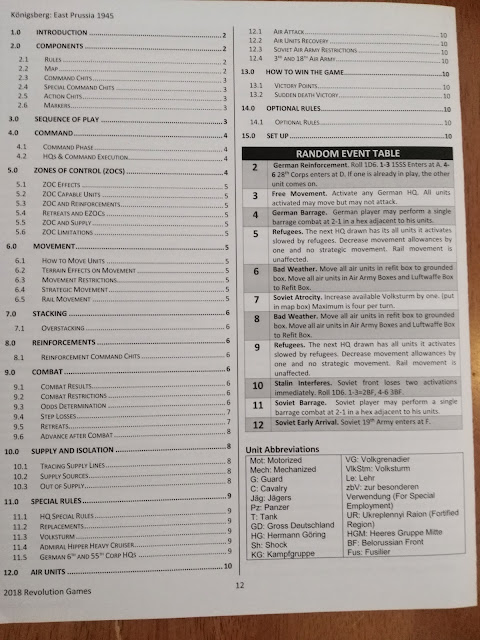A Game of the Second day at Gettysburg
by
It's July 2nd 1863 in a town in Pennsylvania; its only claim to fame is that it
is a crossroad for several of the major roads in the area. The early
concentrated attack that General Lee was hoping for this day was not
going to happen. The afternoon hours were ticking by. Longstreet does
not seem to have ever wanted to attack at Gettysburg. Was he suffering
the 'slows', or did he actually believe that the best course for the Army of
Northern Virginia was to fight on the defensive? No one knows for sure.
There have been millions of pages written about this battle and about
this particular day of the larger battle. This was probably the closest
Lee ever came to inflicting a large defeat on the Army of the Potomac on
Union soil. Would it have crushed the Union? Highly doubtful, the
defenses around Washington were very impressive. Even a half routed Army
of the Potomac could have held off the ANV until the Union could
call in reserves from everywhere. Would Lincoln have been reelected
after a defeat like that?

So enough of the history. Let's look at the game and see what you get with it:
Rulebook
One Union Aid Sheet
One Confederate Aid Sheet
Two CRT, Cohesion Test Tables, and Terrain Key Sheet
One Turn Record Track, and Victory Point Sheet
One 22" x 34" Map
Two Counter Sheets, Counters are 5/8" in size
This is the sequence of play:
1) Command Decision Phase
2) Both players choose event chits and setup draw cup
3) Artillery Phase
a. Union Artillery Step
b. Confederate Artillery Step
c. Both sides alternate steps 'a' and 'b' until both sides have
activated all units or passed
d. Artillery Rally/Rebuild Phase
4) Chit Draw Phase
a. Held Event Chit Step
b. Draw Chit Step
5) Brigade Activation Phase
a. Orders Step
b. Fire Combat Step
c. Movement Step
d. Close Combat Step
e. Rally Step
f. If any chits remain in the Draw Cup, return to Phase 3.
Otherwise, go to Phase 5.
6) End Turn Phase
a. Held Chit Play Step
b. Victory Point Awards Step
c. Broken Track Adjustment Step
d. Brigade Activation Markers Reset Step
e. CSA Attack Coordination, USA AOP Reinforcements
 |
| It's the Map, it's the Map, it's the map |
The
rulebook is plain black and white. It is thirty-two pages long. The rules themselves are twenty-one pages long; the rest is the different scenario setups. It is well
set out and easy to read. The counters artwork is very well done.
However to me, the map makes them pale in comparison. The map is one of
the best looking ones I have seen, and I have seen a lot. The map is very different from most. For one, it is very busy. Most maps look pretty spartan for the player to be able to differentiate from different heights and terrain. This one is very colorful, almost like a painting done of a map. The height differences on the map and hex-side slopes are also very easy to distinguish. Each hex is approximately 140 yards across. One strength point equals about fifty men or a single gun. Each game turn represents twenty minutes. Two of the Players' Aids are in black and white. The other three are in color. For roughly
five hours of fighting on one part of a large battlefield, this game
comes with a bunch of scenarios to choose from. These are:
The Round Tops - Six Turns
The Whirlpool - Ten turns
Assault on Emmitsburg Road - Nine Turns
Hammerin' Sickles - Fourteen Turns
Sickles Follows Orders - What If Scenario - Fourteen Turns
 |
| No introduction needed |
This is the second Hermann Luttmann design I have played, and I have been impressed by both of them. This game is part of the Blind Swords System that is also used in these other two games by Revolution Games:
Stonewalls's Sword: The Battle of Cedar Mountain
Thunder in the Ozarks: The Battle of Pea Ridge
Here is a link to the rulebook:
http://www.revolutiongames.us/Gettysburg-LA/LA_Rules_Booklet.pdf
This game has been rated very highly by many of its players. The depth and amount of rules do not make it a good game for a tyro, or to try and get someone interested in wargaming. On the other hand, the grognard will find it to be an excellent game on a subject that usually is just a scenario in larger games about the Battle of Gettysburg. The relatively small map and space needed means a wargamer can easily find a place to play it. The rules are very clear and walk the reader through the rulebook. The counter density is not too bad. You will have some congestion because of the very nature of the terrain. There has been talk of one of the follow up games to be on the Battle of the Wilderness. If it happens, it will be one of the few games I buy into before release. Great effort, wonderful artwork, and it is based on a tried and true formula. What more could you ask for in a game?
Robert















Follow Us